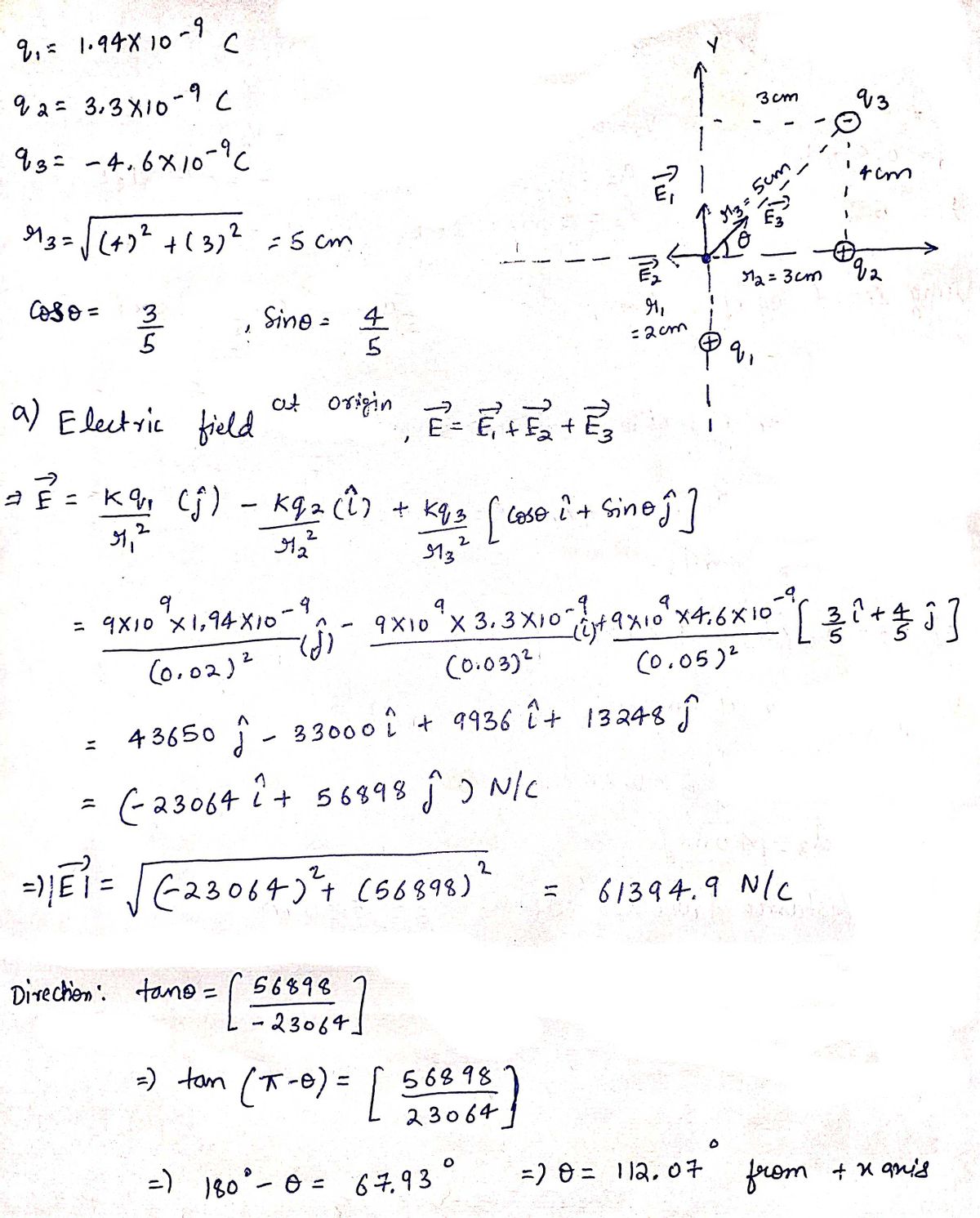A 1.94 x10-9 C charge has coordinates x = 0, y = −2.00; a 3.30 10-9 C charge has coordinates x = 3.00, y = 0; and a -4.60x10-9 C charge has coordinates x = 3.00, y = 4.00, where all distances are in cm. Determine magnitude and direction for the electric field at the origin and the instantaneous acceleration of a proton placed at the origin. (a) Determine the magnitude and direction for the electric field at the origin (measure the angle counterclockwise from the positive x-axis).magnitude and direction ° (b) Determine the magnitude and direction for the instantaneous acceleration of a proton placed at the origin (measure the angle counterclockwise from the positive x-axis).magnitude and direction
A 1.94 x10-9 C charge has coordinates x = 0, y = −2.00; a 3.30 10-9 C charge has coordinates x = 3.00, y = 0; and a -4.60x10-9 C charge has coordinates x = 3.00, y = 4.00, where all distances are in cm. Determine magnitude and direction for the electric field at the origin and the instantaneous acceleration of a proton placed at the origin.
(a) Determine the magnitude and direction for the electric field at the origin (measure the angle counterclockwise from the positive x-axis).magnitude and direction
°
(b) Determine the magnitude and direction for the instantaneous acceleration of a proton placed at the origin (measure the angle counterclockwise from the positive x-axis).magnitude and direction

Step by step
Solved in 2 steps with 2 images









